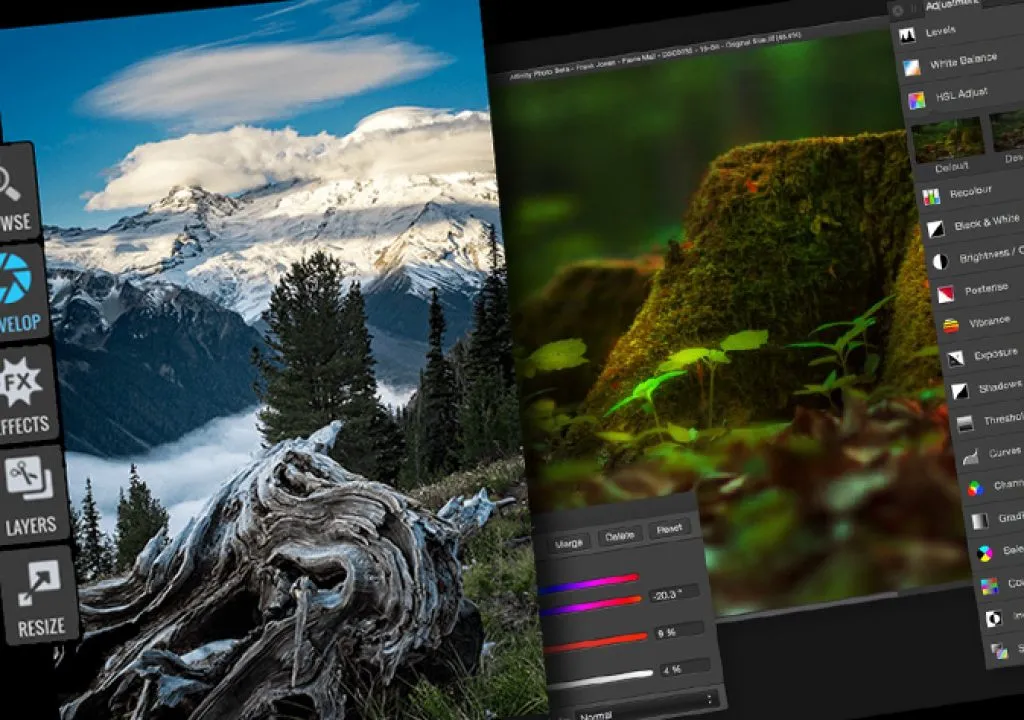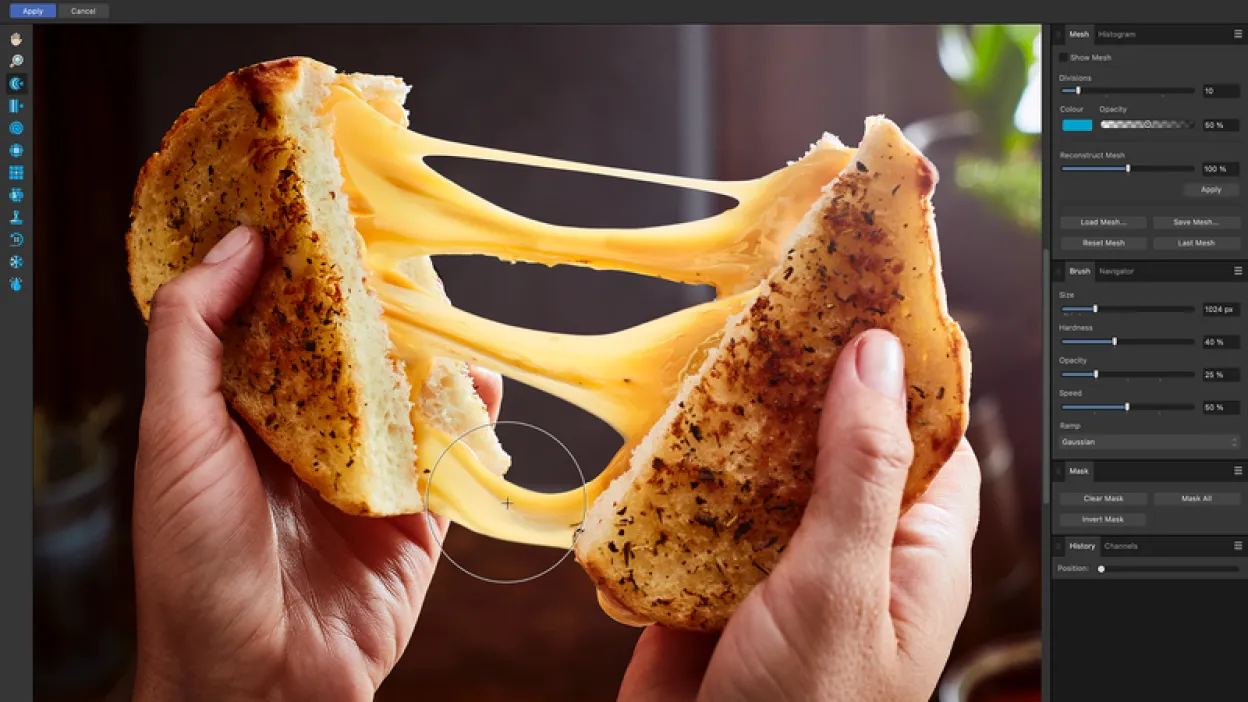The Rise of Affinity A Game-Changing Photoshop Alternative Now Available for Free for Six Months
Welcome to the world of digital design and editing. For years, Adobe Photoshop has been the go-to software for professionals and beginners alike. Its robust features and easy-to-use interface have made it a staple in the industry. However, with the rise of alternative software and the ever-increasing subscription fees for Adobe Creative Suite, many creatives are on the lookout for a more affordable yet equally powerful option.
Enter Affinity Photo, the rising star in the world of digital editing. Launched in 2015 by Serif, this software has quickly gained popularity among designers, photographers, and illustrators due to its impressive features and affordable price tag. And now, they have taken it a step further by offering a six-month free trial of their software, making it accessible to even more users. In this article, we will take an in-depth look at what makes Affinity Photo a game-changing Photoshop alternative and why you should give it a try.
Introduction to Affinity Photo
Affinity Photo is a professional-grade image editing software that offers an impressive set of features, making it a strong competitor to Adobe Photoshop. Developed by Serif, a UK-based software company, it is part of their Affinity suite which also includes Affinity Designer and Affinity Publisher. The software was first released in 2015 for Mac users and later in 2016 for Windows users.
What sets Affinity Photo apart from other photo-editing software is its focus on performance and affordability. With a one-time purchase fee of $49.99, it offers a lifetime license and access to all future updates. This eliminates the need for a monthly or yearly subscription, making it a more budget-friendly option for creatives. And now, with the recent offer of a six-month free trial, it has become even more enticing for those looking to switch from Adobe Photoshop.
The Features That Make It a Worthy Competitor
Powerful Editing Tools
Affinity Photo boasts a wide range of tools and features that cater to the needs of professionals and beginners alike. As a multipurpose editing software, it offers three different personas – Pixel, Vector, and Export – each designed for specific tasks. Let’s take a closer look at what each persona has to offer.
Pixel Persona
This persona is where you can perform pixel-based editing, such as retouching photos, creating digital paintings, and compositing images. The interface is similar to that of Photoshop, making it easy for users familiar with the latter to transition smoothly. One of the standout features of this persona is the ability to work in real-time, meaning any changes made to the image are reflected immediately without the need to save or export. Affinity Photo also supports non-destructive editing, which we will discuss in more detail later on.
Vector Persona
As the name suggests, this persona is designed for vector-based editing. It offers a range of tools for creating and editing vector shapes, curves, and lines. This is particularly useful for creating logos, illustrations, or any graphic design work that requires precise lines and shapes. The vector tools in Affinity Photo are robust and user-friendly, making it a great alternative to Adobe Illustrator.
Export Persona
The export persona is where you can prepare your images for output. You can select different file formats, adjust image quality, and even batch process multiple images at once. This saves time and effort, especially for those working on projects with a large number of images.
Non-Destructive Editing
One of the most significant advantages of Affinity Photo over its competitors is its non-destructive editing capability. This means that any edits made to an image are saved separately, leaving the original image untouched. This allows for greater flexibility and experimentation without fear of ruining the original file. And since Affinity Photo supports unlimited layers, you can go back and forth between edits and make changes as needed.
Integration with Other Software
Affinity Photo seamlessly integrates with other software in the Affinity suite, namely Affinity Designer and Affinity Publisher. This means you can easily switch between the three software to create a cohesive design without having to export and import files. It also supports PSD files, making it easier for users transitioning from Adobe Photoshop.
Customizable Interface
Another advantage of Affinity Photo is its highly customizable interface. Users can customize the layout, toolbars, shortcuts, and more according to their preferences. This makes it easier to navigate the software and allows users to work more efficiently. Additionally, the software has a dark mode option, which reduces eye strain during long hours of editing.
How to Get Your Hands on Affinity Photo for Free

As mentioned earlier, Serif is currently offering a six-month free trial for Affinity Photo, making it a great opportunity to test out the software and see if it’s a good fit for your needs. Here is a step-by-step guide on how to download and install Affinity Photo for free.
- Go to the Affinity website and click on the “Try for Free” button.
- You will be directed to a page where you can choose your operating system – Mac or Windows.
- Once you have selected your operating system, click on the “Start Trial” button.
- You will then be prompted to create an account with Serif. Fill in your details and click “Continue.”
- You will receive an email with a link to your download. Click on the link, and the download should start automatically.
- Once the download is complete, follow the instructions to install the software on your computer.
- After installation, the software will prompt you to enter your account details to activate the trial version.
- And voila! You now have access to all the features of Affinity Photo for six months.
System Requirements
Before downloading Affinity Photo, it is essential to check if your system meets the minimum requirements to run the software smoothly. Here are the minimum specifications for both Mac and Windows:
Mac
- macOS 10.9 or later
- Intel 64-bit processor
- 2GB RAM
- 670MB available storage space
Windows
- Windows 7 (64-bit) or later
- Intel 64-bit processor
- 2GB RAM
- 670MB available storage space
Comparison with Adobe Photoshop
It would be unfair to talk about Affinity Photo without comparing it to its biggest competitor, Adobe Photoshop. While both software offer similar features and cater to the same audience, there are some significant differences that set them apart. Let’s take a look at some of these differences.
Pricing
One of the most significant advantages of Affinity Photo is its affordability. As mentioned earlier, it has a one-time purchase fee of $49.99, which gives you access to all future updates. On the other hand, Adobe Photoshop requires a monthly or yearly subscription, with prices ranging from $9.99 to $20.99 per month, depending on the plan.
Learning Curve
For those who have been using Adobe Photoshop for years, the thought of switching to another software may seem daunting. However, Affinity Photo’s interface and tools are similar to that of Photoshop, making the transition relatively smooth. Of course, there will be some adjustments to be made, but it won’t be as steep of a learning curve compared to someone who is new to digital editing.
User Experience
Affinity Photo’s performance has been praised by many users, citing its speed and efficiency even when working with large files. This is due to its use of OpenGL technology, which helps optimize the software for better performance. In contrast, Adobe Photoshop has faced criticism for being slow and laggy, especially when dealing with multiple layers and large files.
What Users Are Saying About Affinity Photo

Since its launch in 2015, Affinity Photo has gained a loyal following of users who have praised its features and performance. Let’s take a look at what some of these users are saying about the software.
Positive Reviews
Ease of Use
Many users have highlighted how easy it is to use Affinity Photo, thanks to its familiar interface and intuitive tools. The non-destructive editing feature has also been praised, with users finding it useful for experimenting with different edits without worrying about ruining their original file.
Affordability
The affordable price tag of Affinity Photo has been a major selling point for many users, especially for freelancers and students on a budget. The fact that it offers a lifetime license and access to all future updates is an added bonus.
Customer Support
Users have also praised the customer support provided by Serif. The company is known for responding promptly to user inquiries and providing solutions to any issues that may arise.
Negative Reviews
Glitches and Bugs
Like any software, Affinity Photo is not without its flaws. Some users have reported encountering glitches and bugs, particularly when working with large files. However, the team at Serif has been quick to address these issues through updates.
Lack of Some Advanced Features
While Affinity Photo offers an impressive range of features, it still lacks some advanced tools that are available in Adobe Photoshop. This includes 3D editing, HDR merging, and content-aware fill. However, as the software continues to develop and grow, it’s possible that these features will be added in future updates.
Conclusion
In conclusion, Affinity Photo is a game-changing Photoshop alternative that offers powerful features at a fraction of the cost. Its ease of use, non-destructive editing, and customizable interface make it a worthy competitor in the world of digital design and editing. And now, with the offer of a six-month free trial, there has never been a better time to give it a try. So why not take advantage of this opportunity and see for yourself what makes Affinity Photo a rising star in the industry?
